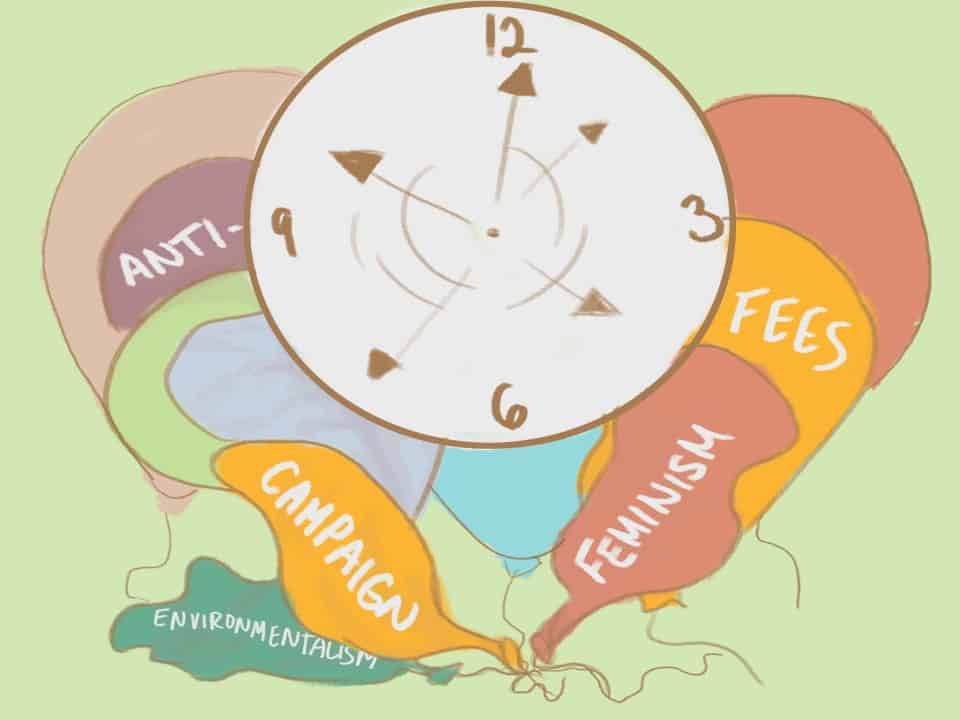Ads for MCAT tutors and requests for test subjects tend to outnumber activist postings at a rate of practically ten to one, which seems to indicate that student activism is not a major priority for University of Toronto students. In fact, an article published in The Varsity shows that interest in student activism is declining.
It is understandable that there is relatively little activist presence on campus. Trends in activist movements change rapidly, and student activism is made difficult by this transient nature — many movements don’t last long enough to affect the changes they seek.
In fact, student activist movements are especially prone to ending without accomplishing the target of their activism. They have some additional difficulties that can lead to their transience: a university is comprised of a largely migrant and demographically disparate population that is encouraged to become increasingly singular and specialized in its interests.
Another, general difficulty that movements face is the rhetoric that helps identify and promote individual movements. While there are benefits to the use of rousing rhetoric, there are risks to treating moral concepts with impact-laden alliterative language. The strategy used to entice people to support moral positions based on linguistic wrapping paper — language, which may be indicative of, but is not necessarily explicit as to, what it refers to — can also indicate the transition from activist movement to inactive memory.
Take, for example, the Occupy movement, and their slogan “We Are the 99 per cent.” This slogan was indicative of what some of the protesters were interested in demonstrating, and it was meant to mark the disparity of wealth distribution. The slogan worked well to draw people to its banner by appealing to the likelihood that the activist group was representative of the individuals that they were trying to recruit. It also worked to boost morale — the inclusive pronoun “we,” fostered feelings of security and community.
However, the slogan was only effective so long as the movement remained relevant. It aided recruitment and then aided morale, but when the movement started to falter, the slogan punctuated the fact.
An image of three people camping in Queen’s Park with a sign saying “We Are the 99 per cent” no longer raises questions of financial disparity. Instead it raises the questions: where are the rest of the 99 per cent? And why don’t they care anymore?
Regardless of this transience, the fading influence of identifying rhetoric, or the migrant student population, these difficulties are not nearly so important as the fact that activist movements are still effective and necessary. Many activist movements, student and otherwise, are influential simply by existing as a part of the public consciousness: by raising public awareness about a problem that was previously only known to a few.
Even if the movement that promoted awareness was not able to promote change, it has laid the groundwork for another movement to do so without having to worry about first promoting awareness. In this way, an individual movement may be effective in the larger scheme of things, without being successful in its specific aims.
For example, the human rights movement, has seen several iterations in just the past hundred years or so: the women’s suffrage movement successfully demanded the right for women to vote; the civil rights movement protested, with amazing rhetoric and massive demonstrations, and arguably failed in its fight for racial equality; and the equity movement is currently fighting for the equal treatment of LGBTQ+ people. These are all sub-species of the fight for human rights. The progress made by each of these movements produces a beneficial effect by aiding the human rights movement, regardless of whether they are successful in their individual aims.
What movements leave as their legacies are largely images and words, and George Orwell wrote convincingly in “Politics and the English Language” about how images and words lose their potency over time. That is, although there are benefits to what previous activist movements have achieved, those benefits will not be potent forever.
So, I urge you to get involved. If each individual movement helps to promote a larger movement, then perhaps each individual person promoting a movement has a similar bottom-up effect on not just movements, but maybe our entire social landscape. Rather than bemoan the difficulties involved, be aware of the transience of movements, and don’t waste a second in putting your support behind the social and political movements that matter to you.
Sean Smith is at Woodsworth College studying philosophy and English. He is The Varsity’s senior copy editor.


